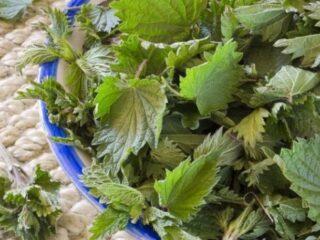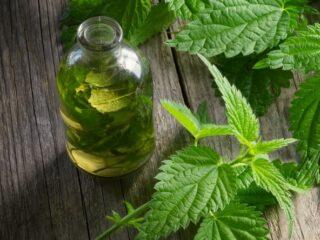Content
Hemp nettle is a herbaceous perennial, popularly sometimes called a stinging nettle. The plant has a rich chemical composition, therefore it is widely used in folk medicine. The species is also used in cooking and industry.
Description of hemp nettle
The plant belongs to the genus Nettle and the Nettle family, of the order Rosaceae. Its main characteristics are as follows:
- erect ribbed tetrahedral stem;
- the rhizome is thick, creeping;
- average height 1.5 m, under favorable conditions up to 2.4 m;
- flowers are small and unisexual;
- large deeply finger-dissected toothed leaves with free oblong-linear stipules, length up to 15 cm, dark green color;
- branched and long inflorescences;
- fruit nut, elliptical or ovoid shape, length up to 2.5 mm, width up to 2.8 mm;
- short and hard stinging hairs on stems and leaves;
- flowering occurs in June-August;
- fruiting in late summer.
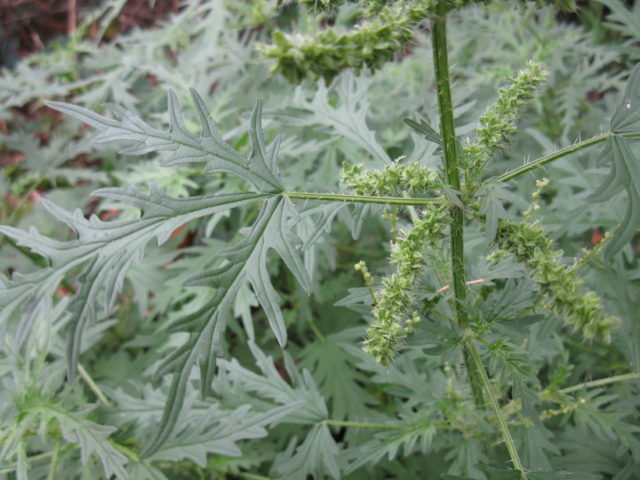
Hemp nettle has a lot of densely spaced flowers, but they look inconspicuous.
The photo of hemp nettle shows its main difference from other species of this genus - the shape of the leaves.
Distribution area
In nature, hemp nettle is widespread throughout Russia, especially in Western Siberia. It also grows in Central Asia, China and Mongolia. Perennial prefers slopes, littered places. It can often be found along the roads. Hemp nettle feels good on wastelands, in the steppe and forest-steppe zones.
The plant is unpretentious, so you can grow it at home without any problems. Hemp nettle in a pot feels good, but it needs a large container. Crop care is simple - loosening the soil, watering, weeding.
The composition and value of the plant
Hemp nettle contains a lot of valuable elements. It contains the following substances:
- vitamin K;
- ascorbic and pantothenic (B5) acids;
- tannins;
- carotene;
- lecithin;
- starch;
- macro- and microelements, including iron, calcium, sulfur, manganese, potassium;
- ammonium carbonate;
- formic acid;
- flavonoids including diosmin;
- essential oil;
- protein substances;
- gum;
- glycoside;
- secretin (peptide hormone);
- chlorophyll;
- phytoncides.
The chemical composition of this species is close to the related dioecious nettle. Most of the vitamins are concentrated in the leaves of the plant.
One of the interesting elements in the composition of hemp nettle is formic acid. It is contained mainly in the hairs on the leaves and stems. It is this element that causes pain when touched, since it has an irritating effect.
There is a lot of starch in hemp nettles. In terms of its content, the plant is close to peas.
Healing properties
The valuable elements in hemp nettle endow it with healing powers. The plant has the following properties:
- hemostatic;
- anti-inflammatory;
- wound healing;
- diuretic;
- anthelmintic;
- antipyretic;
- vasoconstrictor.
Hemp nettle preparations are used for uterine and intestinal hemorrhages, enteritis with acute or chronic course. The plant helps to normalize carbohydrate metabolism. It is also used for other problems:
- fever;
- rheumatism;
- radiculitis;
- anemia;
- diarrhea.
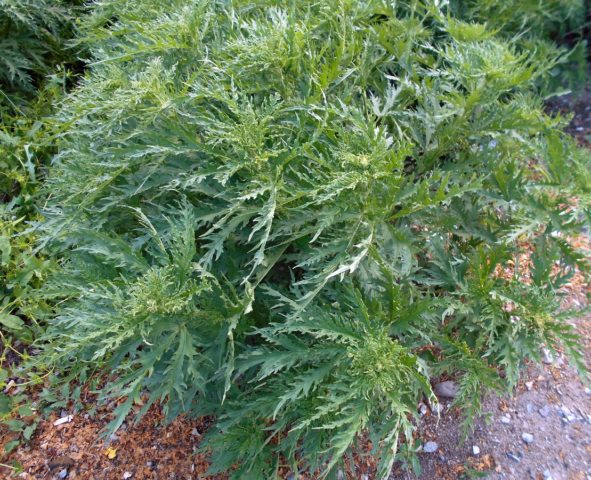
Different parts of hemp nettle have healing properties - roots, leaves, stems
Application features
There are several areas of application of hemp nettle - folk medicine, cooking, production. Each direction has its own characteristics.
In folk medicine
In folk medicine, the roots and leaves of hemp nettle are mainly used. You can prepare these parts of the plant yourself. In each case, there are certain deadlines. Leaves must be collected during flowering, when the maximum of valuable elements is concentrated in them. Root harvesting should be planned in early spring or fall.
Hemp nettle leaves are used to treat anemia, uterine and intestinal bleeding, enterocolitis in acute or chronic forms. In such cases, use powder, juice, infusion or liquid extract. These funds also have a diuretic effect, are multivitamin formulations.
For colitis, nettle infusion is effective. You need to cook it like this:
- Grind the leaves of hemp nettle. You can use a dry product.
- Measure out 3 tbsp. l. raw materials with a slide.
- Boil the leaves with two glasses of boiling water.
- Insist hour.
Take the ready-made infusion half an hour before meals 3-4 times a day. At one time, 1-2 tbsp. l. facilities.
Nettle infusion for bleeding is prepared according to the same algorithm, but 1 tbsp is needed for a glass of boiling water. l. dry leaves. Drink 60 ml four times a day.
If you need to make up for a vitamin deficiency or stop bleeding, then you should take nettle juice. It is made from fresh leaves. Drink the remedy for 1 tsp. three times a day.
With hypovitaminosis, an infusion of dry leaves of hemp nettle is also effective. You need to brew 3 tbsp. l. chopped raw materials 0.5 liters of boiling water, leave for an hour and drink three times a day half an hour before meals for ½ cup. It also helps with diabetes and anemia.
Hemp nettle leaves are used to treat various skin lesions - wounds, burns, abscesses. The healing effect of the plant is due to the content of phytoncides and chlorophyll.
For pains accompanying sciatica, rheumatism and other pathologies, fresh shoots are used. They need to pat the affected areas. The stems can be connected to birch branches and used as a bath broom.
In the west of the Irkutsk region, hemp nettle is used for malignant tumors. Use the roots of the plant, making an infusion from it:
- Grind the raw materials, add a glass of water to each tablespoon.
- Place the product in a boiling water bath for 15-20 minutes.
- Insist half an hour at room temperature.
- Strain.
Such a remedy should be taken before meals for 1 tbsp. l. 3-4 times a day. You can add celandine herb to the infusion - 1 tsp. in a glass of water.
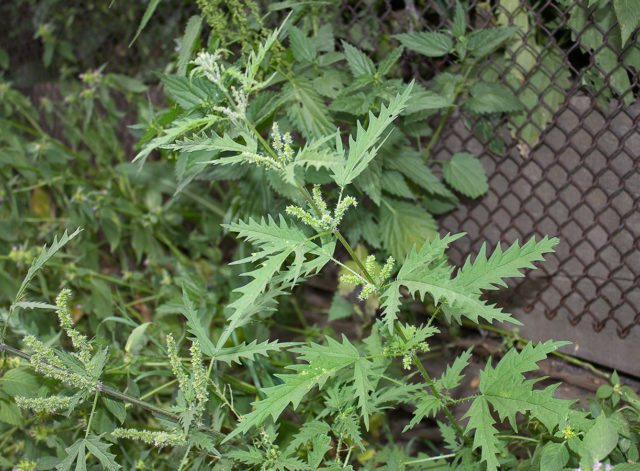
You need to harvest hemp nettles in dry, clear weather.
Hemp nettle leaves help with hair loss and dandruff. In these cases, the raw material is used with the leaves of coltsfoot, preparing the infusion for external use. The algorithm is as follows:
- Grind dried nettle leaves, measure out 1 tbsp. l.
- Prepare a mother-and-stepmother in the same way, but take half the volume.
- Brew the leaves with 0.3 liters of boiling water.
- Insist hour.
- Strain.
Use the resulting infusion after shampooing for rinsing and rubbing into the skin. You do not need to wipe your hair after treatment. The procedure is repeated three times a week for a month.
Hemp nettle has a minimum of contraindications. Prohibited for internal use during pregnancy due to the risk of premature birth. In rare cases, the plant causes an allergic reaction.
In cooking
In cooking, hemp nettle can be used to make soups and salads.Young leaves of the plant, which are saturated with vitamins, are added to such dishes.
Hemp nettle can be used for seasoning. The algorithm is as follows:
- Prepare a solution - dissolve 1 tbsp in 1 liter of water. l. sea salt.
- Dip nettle leaves in liquid, soak for several hours.
- Dry the raw materials, keep them on ice cubes for several hours.
- Dry the leaves completely. You can use a dryer or oven.
Store the seasoning in an airtight glass container.
An unusual use for hemp nettle is wine making. This direction is used mainly in England. From 40 kg of leaves, you can get 3 liters of drink. Collect only the upper parts of the plant. One of the recipes is as follows:
- Rinse 2 liters of nettle leaves, add water, put on the stove.
- After boiling, cook over low heat for 30 minutes.
- Strain the raw materials.
- Dissolve 0.5 kg of sugar in the liquid.
- Add lemon and orange juice, thin strips of their zest and ginger (1 cm of root), 0.1 l of strong black tea brew.
- Dilute wine yeast according to the instructions, add to the rest of the ingredients.
- Leave the container with wine for five days, the temperature should be stable.
- Strain the composition, put an air valve.
Fermentation takes approximately three months. After its completion, the wine must be bottled. The drink must be clear.

To remove the pungency, you need to lower the nettle for a few minutes in boiling water.
In industry
Hemp nettle is used in various industries. It contains chlorophyll, which is valued in several areas at once - the manufacture of food paint, pharmaceuticals, and perfumery.
It is also possible to use hemp nettle fibers in the production of paper, rope, burlap. At one time in the Nerchinsk region (Trans-Baikal Territory) they tried to cultivate this plant, including as a fodder crop. This direction was abandoned because the portage exit is not so big.
Conclusion
Hemp nettle is a herbaceous perennial with stinging stems and leaves. Its various parts have healing properties and are used in folk medicine. The plant is added to various dishes, spices, sauces, and wine are made from it.

